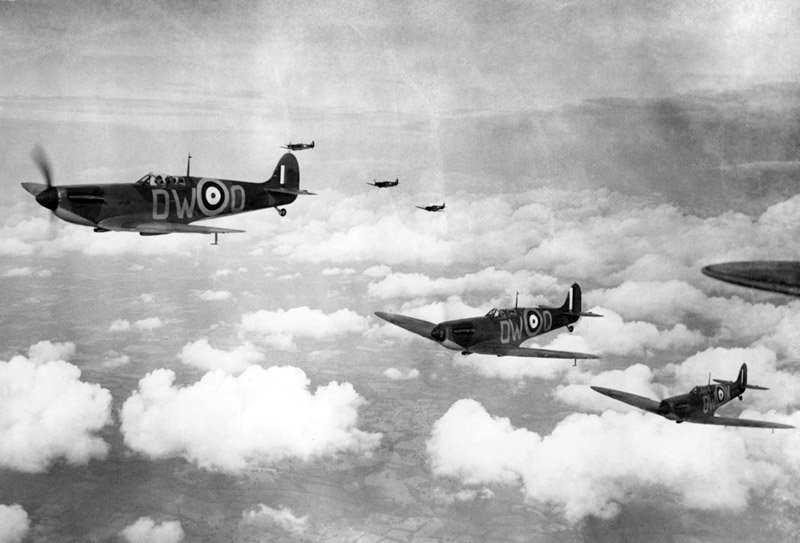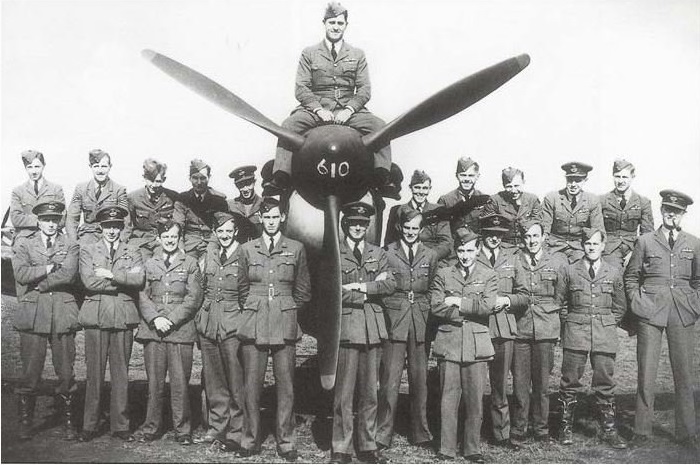- Home
- Local History
- Dunkirk: The RAF support the evacuation
Dunkirk: The RAF support the evacuation
Written by Pam Preedy.
By 26th May, 1940 Britain faced “a colossal military disaster . . . the whole root and core and brain of the British Army” (Churchill) had been stranded at Dunkirk and seemed about to perish or be captured.
The British Expeditionary Force (BEF) went to help defend France. For eight months while economic sanctions were imposed on Germany, little actual warfare occurred (the Phoney War). Then, on 10th May, 1940 Germany invaded Belgium, the Netherlands and France. Three panzer corps attacked through the Ardennes and drove the BEF towards the English Channel, trapping them at Dunkirk. Thousands of men with nowhere else to run arrived on the beaches. The remains of the Belgian forces, and three French field armies were likewise trapped along the northern coast of France.
The film Dunkirk tells the story of the evacuation so effectively. Churchill and his advisers expected that only 20,000 to 30,000 men would be rescued. Ultimately over 338,000 British and French troops were brought home, turning a disaster into a miracle.


We all know the story of Operation ‘Dynamo’; the small boats joining the Navy (mostly captained by naval personnel) in a desperate bid to bring home as many men as possible . The small boats could come close to the shore to rescue desperate, terrified and exhausted men.
Perhaps less well-known is the part played by the Royal Air Force. To the men on the beaches the RAF was almost invisible. What they did see were the terrifying German dive-bombers; Stukas and Heinkels as they dropped bomb after bomb on Royal Navy ships and the soldiers swarming across the beaches.
Unknown to them, pilots from the RAF were deep behind Dunkirk trying to keep the Luftwaffe away. From 27th May to 5th June, 1940, Biggin Hill (and its Sector airfields), pilots in Hurricanes and Spitfires provided aerial cover. The pilots of these planes were constantly patrolling the skies and keeping the Luftwaffe at bay. The slower Hurricanes (60% of the RAF fighter strength at the time) usually attacked the German bombers, while the faster Spitfires went after the faster Messerschmitt 109s, their bomber escorts.
From the beginning of the operation, RAF squadrons had been ordered to provide air supremacy for the Royal Navy. Over the course of the operation, the RAF flew 2,739 fighter sorties, 651 bombing raids and 171 reconnaissance flights. Fighter Command claimed 262 enemy aircraft, losing 106 of their own. In total six Biggin Hill sector Squadrons joined the fight, three squadrons of Spitfires and three of Hurricanes.
A total of 19 pilots from these Squadrons were killed during the action. These are all listed and remembered in the Biggin Hill Memorial Chapel. Pilots from other flying sectors were also in the skies over Dunkirk, with a total loss of some 80 RAF flyers.
Here are some of the Biggin Hill stories:
Sergeant William Medway from 610 Spitfire Squadron was shot down and died on 27th May, while providing air cover to Allied troops evacuating out of Dunkirk. His body is buried in Belgium.
Pilot Officer Gordon Stewart of the 242 ‘Canadian’ Squadron flying Hurricanes was shot down by a Messerschmitt 109 on 31st May. A fellow pilot from 242 Squadron was killed later in this action.
Four Hurricane pilots from 229 Squadron briefly based at Merville, Lille in France, were lost in action, three on the same day 29th May (Flight Lt. Falcon Clouston; Sergeant Pilot James Harrison and Flight Lt. Patrick Browne). This was a bad day for the Squadron. Flight Lieutenant Falcon N. Clouston was leading his Hurricane squadron over the battle area when they encountered a swarm of Messerschmitts. They lost five Hurricanes (and three pilots) during that encounter.

Some bodies such as that of Flying Officer Gerald Kerr were never recovered, but are commemorated on the Runnymede Memorial in Surrey. Far from being absent at Dunkirk, the RAF were constantly on patrol working to keep the Germans at bay.
Ultimately over 338,000 (a third of them French soldiers) were evacuated from those terrifying beaches and 90,000 were left behind to be taken prisoners of war, most held for the duration of the war – five years. Around 16,000 French soldiers and 1,000 British soldiers died during the evacuation. 87 airmen were lost during ‘Dynamo’.
Operation ‘Dynamo’, was widely celebrated as a miracle and created the ‘Dunkirk Spirit’ which helped boost civilian morale, and helped Britain to fight on in the summer of 1940.
Further your research
Originally published in Life in Bromley magazine (Issue 3, May 2022)
